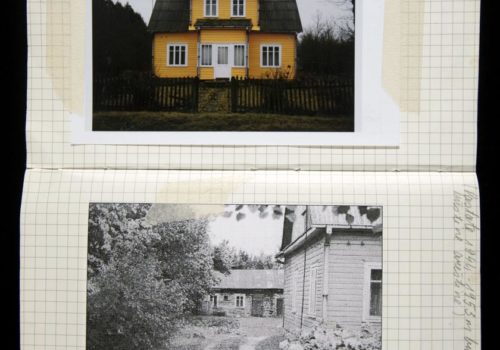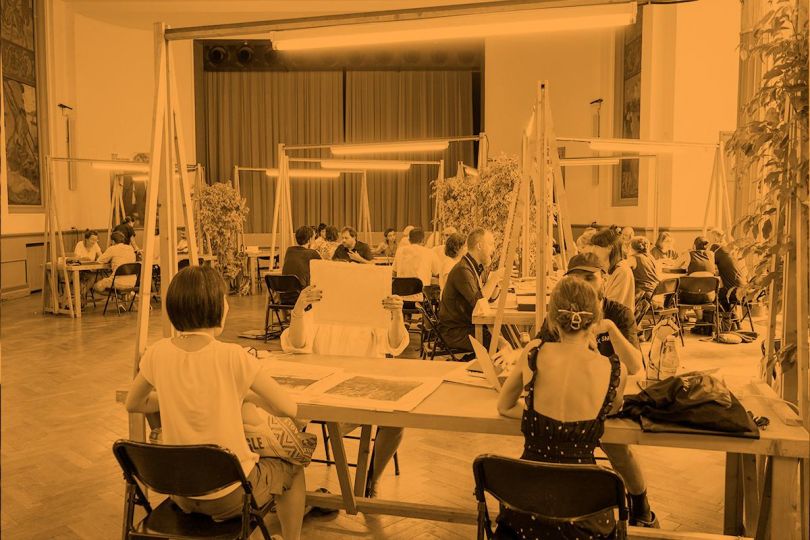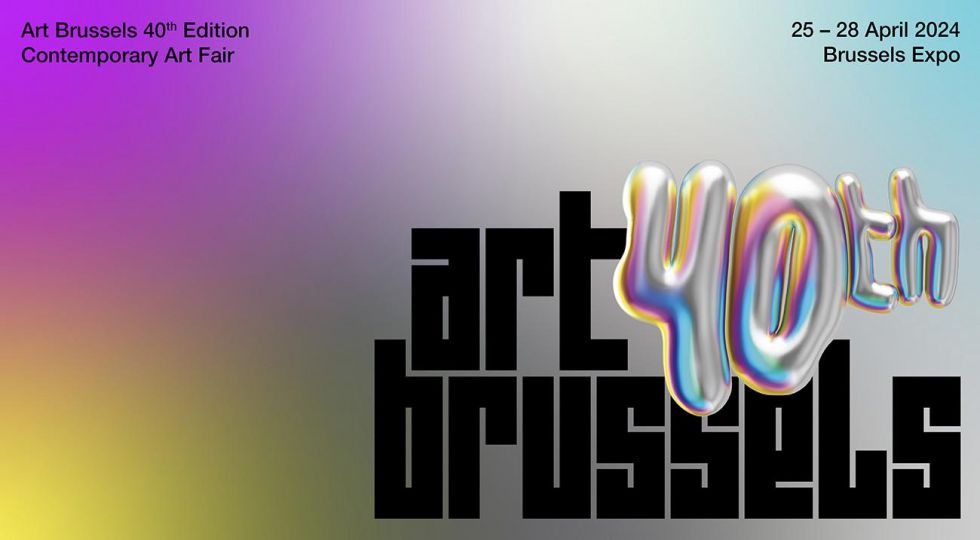I interviewed Simon Baker on his only day in London after a trip to Japan and on his way to Arles. Simon Baker is one of the four nominators for this year’s Discovery Award of Les Rencontres d’Arles. He is curator of Photography and International Art at the Tate Modern since Autumn 2009. The first ever in the museum’s history. Baker’s nominees are Indré Serpytyte, Mark Ruwedel and Minoru Hirata.
We started our conversation by discussing the meaning of discovery, his vision and the challenges and opportunities that this award offers to those involved. Baker frankly admitted that Les Rencontres d’Arles has a highly knowledgeable audience and it’s therefore very hard to surprise.The aim that he set for himself as a curator was to present something never seen before: to reveal and uncover aspects that we may not know about. He asked himself what a discovery might be for the visitors. With Indré Serpytyte, Mark Ruwedel and Minoru Hirata, Baker brings us three different interpretations of the meaning of discovery.
Indré Serpytyte is a young Lithuanian artist graduated in Photography from the Royal College of Art in London just in 2009 but whose work has already been included in major exhibitions such as the annual photography show at the Victoria and Albert Museum in 2010. In the same year she also won the Magenta Foundation, Flash Forward – Bright Spark Award. When I asked Baker about his collaboration with Indré, he remarked that his intent in proposing her for the Discovery Award was to be able to show a complete body of work in all its different components. He brought as examples Boris Mikhailov exhibition in 2009 and last year’s Discovery Award nominee Leigh Ledare‘s Double Bind: a similarly complex structured work in which every part seems to be well integrated and work well together. Baker pointed out several times during our conversation that the strength of Arles is to offer the artists with the opportunity to show the whole series, setting a context that allows the audience to really understand the work in depth: “Photography is seen at its best when in a series.”
Indré Serpytyte presents at Les Rencontres 1944-1991, a series that examines the political and social consequences of the post-war history of her country, the occupation by the Stalinists, the death of 20 mil. people (60 mil. as reported by unofficial sources), and the role of the partisans – the so called Lithuanian “forest brothers”. Each stage of 1944-1991 is presented: from the initial archive research to the photographs of the village houses – that the Stalinists took over making them a symbol of torture for the local inhabitants – her notebooks and the reconstructed models of the actual houses. Baker was adamant in highlighting that the difficulty of the archive research was also indirectly part of exhibition; in fact it has not been possible to reconstruct some of the models of the houses that are therefore missing as it was impossible to trace them in the archive.
A different sense of discovery is to be found in Mark Ruwedell’s work: it’s about the contrast between the name of an established artist that immediately recalls a certain visual language and his new work that brings him a step further into another direction.
Baker adds that he had a similar experience of discovery with Eugene Richards’ most recent work. During one of his visits to Ruwedel in Los Angeles, the curator was surprisingly presented with a strong, valuable, compelling and humorous work with a conceptual sense of the history that repositions the photographer’s research into the present. Ruwedel, who documented the impact of the intervention of the human activity on the landscape in the Western United States for many years, with Dusk and Dog Houses abandons a sense of historical time and the reference to traces of a distant past. Whilst in 1212 Palms, Ruwedel applies his long-term conceptual approach to landscape photography and plays with the relationship between the environment and the way we name it, allowing to show a deep connection between photography and landscape tradition. 1212 Palms is a series of nine photographs that were named for a certain number of palm trees.The nine names add up to one thousand two hundred and twelve although the number of trees actually seen in the scenes doesn’t correspond.
Before our conversation progressed onto Minoru Hirata, Baker wanted to highlight Ruwedel’s deep commitment to the aesthetic potential of print making. He described the high quality of his prints as sensational: Ruwedel takes care of the printing process himself using an old and extremely rare photographic paper.
The third nominee is 81 year old Minoru Hirata (Tokyo, 1930) best known for his brilliant photographic records of Japanese avant-garde performance art most notably of Shinohara, Neo Dada,Yoko Ono, Hi Red Center, Nam June Paik and Zero Jingen. Baker found this body of work very sophisticated and far from being pure documentation and reportage. He saw in Hirata’s production common elements to the great post-war Japanese photographers such as Sherman Moriyama. Fascinated by this particular work, the curator, decided to go deeper in Hirata’s work and understand the reason why his documentation of performaces was so visually strong.The research led to a totally different side of his activity that dated back to the late ‘60-early ’70 during the American occupation of Okinawa. Baker discovered an unknown aspect of Hirata’s work for which he can be rightfully treated as an artist in his own right. Hirata was immediately attracted by the beauty of Okinawa’s natural landscape but his main focus was the complex geopolitical situation of the island. The greatness of Hirata, for Baker, was his sense of sensitivity to place and the way he showed us what photography can do in photographing places: its potential in recording and revealing the trace in the environment.The two bodies of work will be shown one in front of the other in a subtle game of resonances.
Elisa Badii
















